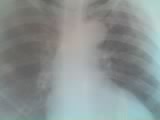dimanche 8 janvier 2017
Antibiotics resistance in Goma city: challenges and opportunity!
Antibiotic resistance has become a serious public health worldwide and special efforts are needed to inverse its trend (Goossens, H., Ferech, M., Van-der-Stichele, R. & Elseviers, M., 2005). Previous studies have argued that there is a linear relationship between increase in use of antibiotics and the increase rate of resistance. This use can be both in human and veterinary conditions and most of times, it is an unnecessary at one hand and at the other hand it may be in overuse or misuse of antibiotics. (Hutchinson, J. M., at al., 2004; Davies, J. & Davies, D., 2010).
For research and monitoring purpose, antibiotic consumption is reported according to the World Health Organization (WHO) ATC/DDD classification (Hutchinson, J. M., at al., 2004; MacDonald, K. & Potvin, K., 2004). However, in many countries this classification is used in order to get reliable data on antibiotic consumption in the country.
The Democratic Republic of Congo (DRC), especially Goma city, is one of the country where the rate of antibiotic consumption is not reported and no data are available in this filed. However, it is know that DRC is also one of the countries where fake antibiotics are used and even the real antibiotic drugs are more overused.
In most countries where antibiotic are used at a high rate like France, most of them are prescribed. But, with our experience, we have noted that more than half of used antibiotic in Goma city are not prescribed by a physician. The population of Goma city has enacted a habit of taking antibiotics without medical prescription and then consults a physician only when they have changed antibiotic more than twice and don’t get any positive result.
In addition, we have assisted to patients’ friends who blamed hospitalized patients asking them why they accepted to become inpatients thinking that they spend more money by paying the hospital bill. Their advance was to continue taking antibiotics and change more types until they could feel better. This is also poverty factor which increases the risk of resistance and complications for patients.
As our hospitals are more equipped to detect the exact causal agent and test if there resistance or not, mostly physician just change the antibiotic used by patients and prescribe another without proceeding to any test for resistance or susceptibility. This is also another factor that increase resistance as physicians work as in a blinded process due lack of lab equipment for infectious diseases and antimicrobial susceptibility testing (AST).
Moreover, due to what we are facing now, researches are needed to know what is the level of antibiotics consumption and resistance in Goma city and more other DRC cities, as all factors to increases resistance are observed. This will be among the opportunity for this country to know the antibiotics consumption and resistance levels and may be a way to begin using the WHO ATC classification to make data available for research.
Therefore, Agir Ensemble (AE) and Hope Medical Center (HMC) are determined to work closely with hospitals and universities to enhance this field and stimulate physicians and other health professionals to pay attention on antibiotic use. Furthermore, the problem seems to be also a community problem because of using unprescribed antibiotics. We need to develop also a community-based approach showing people the danger they are exposed to by this unhealthy behavior.
We are more motivated to find modern equipment at Hope Medical Center for AST which will allow us to proceed to testing for susceptibility and resistance. In this way we can serve as reference for other hospitals to get results for their patients. Therefore, we will appreciate the collaboration of the American Microbiological Association (ASM) to help us implementing this valuable program.
Mateus Kambale Sahani, MD, Fellow MGH (Maastricht University).
Agir Ensemble/Hope Medical Center
Blog: http://agirensemblerdc.blogspot.com
Inscription à :
Commentaires (Atom)





















































































































